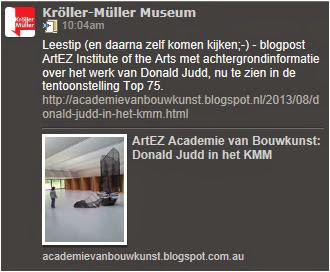"TEACHING ARCHITECTURE, LEARNING ARCHITECTURE"
"Young people go to university with the aim of becoming architects, of finding out if they have got what it takes. What is the first thing we should teach them?
First of all, we must explain that the person standing in front of them is not someone who asks questions whose answers he already knows. Practicing architecture is asking oneself questions, finding one's own answers with the help of the teacher, whittling down, finding solutions. Over and over again.
The strength of a good design lies in ourselves and in our ability to perceive the world with both emotion and reason. A good architectural design is sensuous. A good architectural design is intelligent.
We all
experience architecture before we have even heard the word. The roots of architectural understanding lie in our architectural experience: our room, our house, our street, our village, our town, our landscape - we experience them all early on, unconsciously, and we subsequently compare them with the countryside, towns, and houses that we experience later on. The roots of our understanding of architecture lie in our childhood, in our youth; they lie in our biography. Students have to learn to work consciously with their personal biographical experiences of architecture. Their allotted tasks are devised to set this process in motion.
We may wonder what it was that we liked about this house, this town, what it was that impressed and touched us - and why. What was the room like, the square, what did it really look like, what smell was in the air, what did my footsteps sound like in it, and my voice, how did the floor feel under my feet, the door handle in my hand, how did the light strike the facades, what was the shine on the walls like? Was there a feeling of narrowness or width, of intimacy or vastness?
Wooden floors like light membranes, heavy stone masses, soft textiles, polished granite, pliable leather, raw steel, polished mahogany, crystalline glass, soft asphalt warmed up by the sun... the architect's materials, our materials. We know them all. And yet we do not know them. In order to design, to invent architecture, we must learn to handle them with awareness. This is research; this is the work of remembering.
Architecture is always
concrete matter. Architecture is not abstract, but concrete. A plan, a project drawn on paper is not architecture but merely a more or less inadequate representation of architecture, comparable to sheet music. Music needs to be performed. Architecture needs to be executed. Then its body can come into being. And this body is always sensuous.
All design work starts from the premise of the physical, objective sensuousness of architecture, of its materials. To experience architecture in a concrete way means to touch, see, hear, and smell it. To discover and consciously work with these qualities - these are the themes of our teaching.
All the design work in the studio is done with materials. It always aims directly at concrete things, objects, installations made of real material (clay, stone, copper, steel, felt, cloth, wood, plaster, brick). There are no cardboard models. Actually, no "models" at all in the conventional sense, but concrete objects, three-dimensional works on a specific scale.
The drawing of scale plans also begins with the concrete object, thus reversing the order of "idea - plan - concrete object", which is standard practice in professional architecture. First the concrete objects are constructed; then they are drawn to scale.
We carry images of works of architecture by which we have been influenced around with us. We can re-invoke these images in our mind's eye and re-examine them. But this does not yet make a design, new architecture. Every design needs new images. Our "old" images can only help us to find new ones.
Thinking in images when designing is always directed towards the whole. By its very nature, the image is always the whole of the imaged reality: wall and floor, ceiling and materials, the moods of light and color of a room, for example. And we also see all the details of this transitions from the floor to the wall and from the wall to the windows, as if we were watching a film.
Often however, they are not simply there, these visual elements of the image, when we start on a design and try to form an image of the desired object. At the beginning of the design process, the image is usually incomplete. So we try repeatedly to re-articulate and clarify our theme, to add the missing parts to our imagined picture. Or, to put it another way: we design. The concrete, sensuous quality of our inner image helps us here. It helps us not to get lost in arid, abstract theoretical assumptions; it helps us not to lose track of the concrete qualities of architecture. It helps us not to fall in love with the graphic quality of our drawings and to confuse it with real architectural quality.
Producing inner images is a natural process common to everyone. It is part of thinking. Associative, wild, free, ordered, and systematic thinking in images, in architectural, spatial, colorful, and sensuous pictures - this is my favorite definition of design."
Fragment uit de publicatie:
Peter Zumthor, "Thinking Architecture", (2e editie) 2006, Bazel, Zwitserland, p 65-69.











